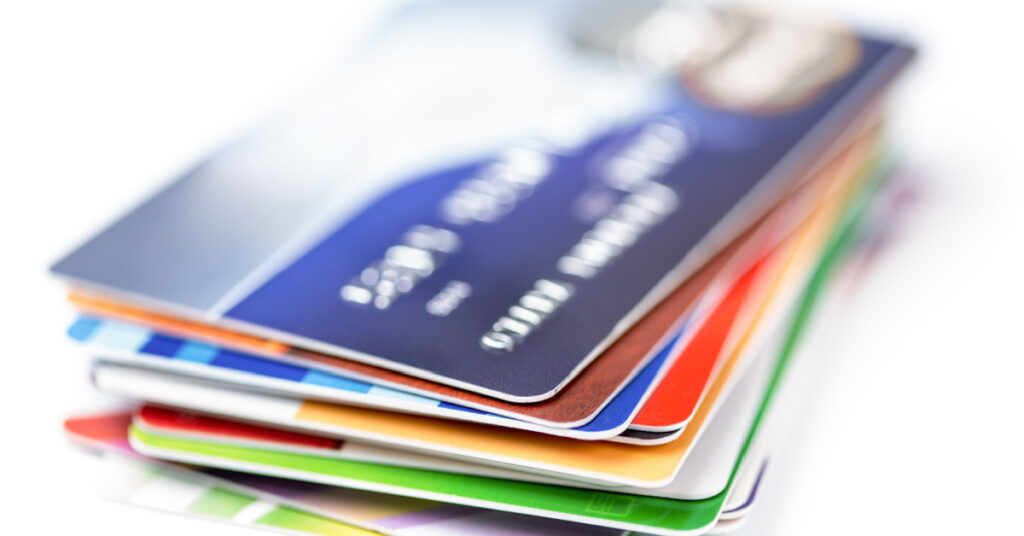Credit cards are a convenient way to finance everyday items, pay bills, and splurge, but they can also be expensive. At the end of 2021, the average person owed $5,221 in credit card debt.
If you’re struggling to make your monthly credit card payments, a balance transfer credit card could help. These cards usually offer an introductory interest rate. The lower interest rate makes paying off the cards easier. But what should you look for? Here are some of the best cards available right now.
Table of Contents
At a Glance: 12 Best Balance Transfer Credit Cards
- Best card with no balance transfer fee: Union Bank Platinum Visa card
- Best for the long no-APR period: U.S. Bank Visa Platinum Card
- Best if you have good credit: Citi Diamond Preferred Card
- Best to earn Thank You points: Citi Double Cash Card
- Best for no fees: Citi Simplicity MasterCard
- Best bonus for making on-time payments: Wells Fargo Reflect Card
- Best for excellent credit: Bank of America BankAmericard Credit Card
- Best if you spend a lot of money on groceries and gasoline: Chase Freedom Flex
- Best to earn travel rewards: CapitalOne VentureOne Rewards Credit Card
- Best for fair credit: CapitalOne QuicksilverOne
- Best to split up large purchases: Slate Edge Credit Card
- Best for unlimited cash back rewards: Discover It
See a card you like? Read on to learn more about each option.
12 Best Low-Fee Balance Transfer Credit Cards
Every balance transfer credit card is a little different in terms of what it offers. To find the best balance transfer card, carefully review different offers and pick the one that meets your needs.
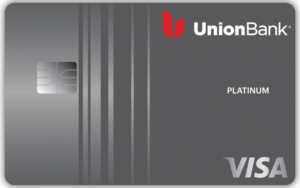
Best for Having No Balance Transfer Fee: Union Bank Platinum Visa card
- Fees: $0 annual fee; up to $37 late payment fee; $35 returned payment fee
- Sign-up bonus: None
- Rewards program: None
- Minimum credit score needed: 750 recommended
- Interest rates: 10.74% to 22.24% variable APR after 15 months
- Intro APR offer: 0% for the first 15 months
- Intro balance transfer APR: 0% APR on balance transfers during the promotional period. $0 for balance transfers completed within 60 days of approval. 3% fee for subsequent balance transfers.
- Other noteworthy perks: It comes with overdraft protection. The card can be linked to Apple Pay or Google Pay for contactless payment.
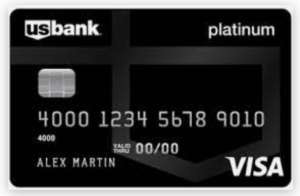
Low Intro APR for 20 Billing Cycles: U.S. Bank Visa Platinum Card
- Fees: $0 annual fee; up to $41 late and returned payment fees
- Sign-up bonus: None
- Rewards program: None
- Minimum credit score needed: 700 recommended
- Interest rates: 16.74% to 26.74% variable APR after 20 billing cycles
- Intro APR offer: 0% for the first 20 billing cycles
- Intro balance transfer APR: 0% APR on balance transfers during the promotional period when made within 60 days of opening the account. 3% or $5 balance transfer fee after that.
- Other noteworthy perks: With the U.S. Bank ExtendPay Plan, there’s no interest on qualifying purchases.
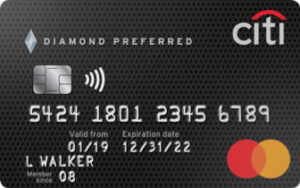
Best if you have Good Credit: Citi Diamond Preferred Card
- Fees: $0 annual fee; 3% foreign purchase fee; $10 or 5% cash advance fee; up to $41 on late and returned payments
- Sign-up bonus: None
- Rewards program: None
- Minimum credit score needed: 670
- Interest rates: 15.99% to 25.99% variable APR
- Intro APR offer: 0% on purchases for 12 months
- Intro balance transfer APR: 0% APR on balance transfers for the first 21 months. 5% or $5 balance transfer fee of the amount transferred, whichever is greater. This offer is for balance transfers completed within 4 months of opening an account
- Other noteworthy perks: It comes with free FICO score monitoring, contactless payments, and Citi entertainment access
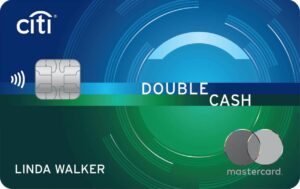
Best to Earn Thank You Points: Citi Double Cash Card
- Fees: $0 annual fee; 3% foreign transaction fee; 5% or $10 cash advance fee; up to $41 late and returned payment fee
- Sign-up bonus: Earn $200 cash back when you spend $1,500 on purchases in the first 6 months.
- Rewards program: Earn 2% cash back on select payments and any purchases made outside of the transferred amount.
- Minimum credit score needed: 700
- Interest rates: 16.24% to 26.24% variable APR after the promotional period
- Intro APR offer: 0% introductory APR
- Intro balance transfer APR: 0% APR on balance transfers for the first 18 months. 3% or $5 balance transfer fee for the first 4 months, or a 5% fee on all balance transfers made after that.
- Other noteworthy perks: It includes cash back rewards through Thankyou Points. You get one point per $1 spent and another point for repayment. Points are unlimited.
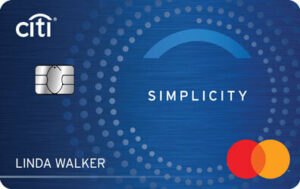
Best for No Fees: Citi Simplicity Card
- Fees: No annual or late fees; no other penalties; 3% foreign purchase fees
- Sign-up bonus: None
- Rewards program: None
- Minimum credit score needed: 700
- Interest rates: 16.99% to 26.99% variable APR after the promotional period
- Intro APR offer: 0% on purchases for 12 months
- Intro balance transfer APR: 0% APR on balance transfers for 21 months. 5% or $5 balance transfer fee, whichever is higher. Balance transfers must be completed within 4 months of opening the account.
- Other noteworthy perks: It comes with automatic account alerts, contactless payments, digital wallet access, and customized payment dates.

Best Bonus for On-Time Payments: Wells Fargo Reflect Card
- Fees: $0 annual fee; $40 late payment fee; 5% or $10 cash advance fee (whichever is higher)
- Sign-up bonus: None
- Rewards program: None
- Minimum credit score needed: 690
- Interest rates: 15.24% to 27.24% variable APR after the promotional period
- Intro APR offer: 0% on purchases for the first 18 months. If you make all minimum payments on time during this period, you get an additional 3 months at this rate.
- Intro balance transfer APR: 0% APR on balance transfers for 18 months. 3% or $5 balance transfer fee, whichever is higher. Balance transfers must be completed within 120 days of opening the account to receive this rate. After 120 days, the balance transfer fee is 5%.
- Other noteworthy perks: It includes cell phone protection when you pay using the card.
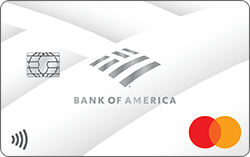
Best for Excellent Credit: Bank of America BankAmericard Credit Card
- Fees: No annual fee; no penalty APR for late payments; up to $40 for late payments
- Sign-up bonus: $100 statement credit bonus after spending $1,000 on purchases within 90 days of opening the account
- Rewards program: None
- Minimum credit score needed: 690
- Interest rates: 15.24% to 25.24% variable APR after the promotional period ends
- Intro APR offer: 0% on purchases for 18 billing cycles
- Intro balance transfer APR: 0% APR on balance transfers for the first 18 billing cycles when completed within 60 days of opening the account. Afterward, the balance transfer fee is 3% (minimum $10).
- Other noteworthy perks: It includes contactless payments, digital wallet access, overdraft protection, and real-time alerts.
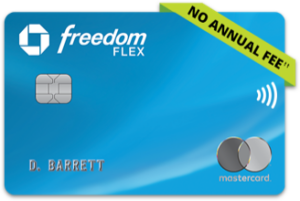
Best for Grocery and Gas Purchases: Chase Freedom Flex
- Fees: $0 annual fee; up to $40 fee for late and returned payments
- Sign-up bonus: None
- Rewards program: $200 bonus when you spend at least $500 on purchases within three months of opening the account. Earn 5% cash back on purchases made at grocery stores and gas stations (up to $6,000 annually). Earn 3% cash back on restaurant and drugstore purchases.
- Minimum credit score needed: 690
- Interest rates: 17.24% to 25.99% variable APR after the promotional period.
- Intro APR offer: 0% on purchases for 15 months
- Intro balance transfer APR: 0% APR on balance transfers for the first 15 months. Balance transfers must be completed within 60 days of opening the account and have a 3% or 5% fee.
- Other noteworthy perks: It has competitive cashback rewards for gas purchases. These rewards don’t expire. It also comes with cell phone protection and zero liability protection.
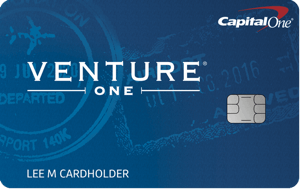
Best for Capital One Travel Rewards: CapitalOne VentureOne Rewards Credit Card
- Fees: $0 annual fee; 3% or $10 cash advance fee, whichever is higher; $40 late payment fee
- Sign-up bonus: You get 20,000 bonus miles when you spend $500 on purchases within three months of opening the account.
- Rewards program: Earn 1.25 miles for every dollar you spend. Also, earn 5 miles on hotels and car rentals booked with Capital One Travel.
- Minimum credit score needed: 750
- Interest rates: 16.49%, 22.49%, or 26.49% APR after the promotional period
- Intro APR offer: 0% on purchases for 15 months
- Intro balance transfer APR: 0% APR on balance transfers for the first 15 months. 3% fee on balance transfers made within 15 months. No balance transfer fee after that.
- Other noteworthy perks: It comes with some dining rewards that can be used on Amazon. It also includes access to Capital One Entertainment.
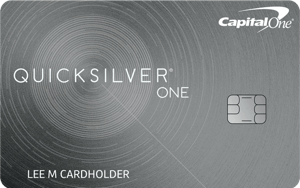
Best for Fair Credit: CapitalOne QuicksilverOne
- Fees: $39 annual fee; up to $40 late payment fee
- Sign-up bonus: None
- Rewards program: Unlimited 1.5% cash back on any purchase
- Minimum credit score needed: 690
- Interest rates: Variable 26.99%
- Intro APR offer: 0%
- Intro balance transfer APR: There’s a 0% intro APR and a 3% balance transfer fee.
- Other noteworthy perks: It comes with credit score monitoring, fraud coverage, and contactless payments.
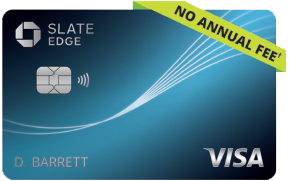
Best to Split Up Large Purchases: Slate Edge by Chase
- Fees: $0 annual fee; up to $40 late and return payment fee; 29.99% penalty APR on payments that are over 60 days late
- Sign-up bonus: None
- Rewards program: This card is eligible for My Chase Plan, which lets you pay off purchases over time in fixed monthly payments without interest.
- Minimum credit score needed: 690
- Interest rates: 17.24% to 25.99% variable APR after the promotional period
- Intro APR offer: 0% on purchases for 18 months
- Intro balance transfer APR: 0% APR on balance transfers for the first 18 months. 3% or $5 fee on balance transfers completed within 60 days of opening the account. 5% fee on all balance transfers made after that.
- Other noteworthy perks: Making on-time payments every month could lower the interest rate by 2% yearly when you spend at least $1,000. You may get a higher credit limit if you spend $500 during the first 6 months and make on-time payments.
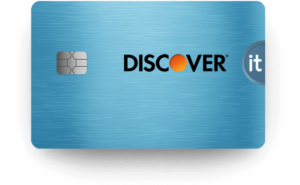
Best for Unlimited Cash Back Rewards: Discover It
- Fees: No annual fee; $0 fee for the first late payment, followed by $41 per late payment; $41 returned payment fee; 5% or $10 cash advance fee, whichever is higher
- Sign-up bonus: None
- Rewards program: It comes with 5% cash back rewards on everyday purchases. It also includes 2% cash back on purchases at restaurants and gas stations. Other purchases have 1% unlimited cash back.
- Minimum credit score needed: 700
- Interest rates: 13.49% to 24.49% variable APR after the promotional period
- Intro APR offer: 0% on purchases for 15 months
- Intro balance transfer APR: 0% APR on balance transfers for the first 15 months. There’s a 3% balance transfer fee until November 10, 2022. After that, the balance transfer fee is 5%.
- Other noteworthy perks: It comes with online privacy protection, a $0 fraud liability guarantee, and an easy-to-use mobile app.
Methodology: Credit Summit analyzed dozens of credit card balance transfer offers. Top cards were selected based on terms, rewards, length of introductory APR features, customer satisfaction, minimum credit score requirement and fees.
Fees
Most balance transfer credit card offers will include a fee that ranges from 3% to 5% of the total balance transferred, and if there is a minimum or maximum fee it will be calculated per transfer, not by the total transferred balance. If you’re transferring one large debt, look for a card with a fee cap.
READ MORE: Credit card refinancing vs. debt consolidation loans
How Balance Transfer Offers Work
Credit card balance transfers can be valuable, particularly if you have a lot of high-interest payday loan debt.
Because the low-interest offer is for a limited time, they will work best for cardholders who can pay off the remaining balance before the introductory period ends.
The introductory offer is only available for a fixed period of time, usually the first year you hold the card or within 12 to 18 months of account opening. Some cards offer longer terms, and some will extend the offer by a few months as long as you make minimum payments by the due date.
Pro tip: Some credit card issues start the introductory offer upon card approval and others start the clock on the activation date. If you aren’t sure exactly when your intro APR offer ends, call the credit card company and ask.
Once your card application is approved, you use new card to pay off your existing balances on high-interest credit cards. Qualifying balance transfers should post to your new account within a few days of account opening. Using the paper checks that are sometimes sent out with your new card could take a couple of weeks.
Because you aren’t paying interest, all of the money you pay each month will go toward paying down your debt. This can be a significant savings.
Once the introductory offer ends, you will pay the regular APR, which currently averages around 19% APR.
Pro tip: Usually only new cardholders will be eligible for an introductory APR period. So, for example, if you currently have most of your credit card debt with Citi and Chase, you should consider a Discover or Wells Fargo card.
READ MORE: How to get out of credit card debt without ruining your credit
What to Look For in a New Card
Every balance transfer credit card is a little different in terms of what it offers.
For example, they typically come with a promotional period ranging from 6 to 21 months. These cards will either have 0% or low APR (annual percentage rate) during this period. You won’t have to pay any interest if you pay off the balance before the promotional period ends.
When choosing a balance transfer card, check what it includes. Look for things like:
- Cashback rewards rate or bonuses on new purchases
- Annual or late fees
- Balance transfer fees
- Traditional interest rates
- Fixed or variable APR (during and after the promotional period)
- Quarterly bonus categories (Some offer rotating categories ranging from grocery stores to drugstores)
- Specific terms or limitations about using the card
- Eligibility requirements (ex. minimum credit score, debt-to-income ratio, or income)
READ MORE: Effective ways to consolidate credit card debt
Pro tip: Before deciding whether a balance transfer credit card is right for you, add up your existing credit card debt to determine how much you owe. Then, look for a balance transfer card with a low introductory APR that fits your needs. Creditworthiness will be a factor. These credit card offers usually won’t be available to borrowers with poor credit.
How Much Money Can I Save?
This depends on how much you originally owed, the balance transfer fee, and the new interest rate. Use an online calculator to calculate and determine how much you could save.
Real World Example
Say you owe $5,000 in credit card debt on a high APR credit card with a 24% interest rate and a minimum monthly payment of $150. Making only the minimum payment, this card would cost approximately $8,322.
Now, say you move this debt onto a balance transfer card with a 3% balance transfer fee and 0% intro APR for 12 months. After the introductory period ends, the new card would also have a 24% APR. If you make the same minimum payment as before — $150 — you would pay around $6,185.
That’s about $2,137 in savings.
READ MORE: Does debt consolidation close credit cards?
Pay Attention to Features and Bonuses
The best balance transfer cards often come with extra features and bonuses, such as:
- 1% to 5% cash back on select purchases (ex. gas stations, pharmacies, restaurants, retailers, etc.)
- Bonus travel points for every $500 or $1,000 you spend
Pro tip: Even if the card has amazing perks, don’t charge anything to it until you’ve paid off the transferred amount first. If you do, the card could start accruing interest on the new purchases or the entire balance. The interest charges will almost always be higher than any rewards you could receive.
Put the balance transfer card away and make the monthly payments until it’s paid off. After that, you can use it to benefit from any perks or rewards.
How to Successfully Complete a 0% Balance Transfer
If you decide to do a balance transfer to consolidate your credit card debt, here’s what to do next.
- Check your credit report
- Apply
- Activate the new credit card
- Initiate the transfer(s)
- Continue making payments on the old card
- Monitor your accounts
- Pay the card off before the introductory APR period ends
Pro tip: Don’t close the account once the balance reaches zero on the old card. Put the card away to avoid using it. Keeping it open can help your credit score by increasing the average account age and decreasing your credit utilization ratio. Only close it if the card comes with an annual fee or you’re tempted to use it again.
Pros and Cons of Balance Transfer Cards
Even the best balance transfer cards come with pros and cons. Here are the main ones.
Pros
- You can pay off credit card debt faster
- Paying the entire balance within the 0% APR introductory period could save you money in interest
- Consolidating multiple credit card debts into one can help you stay on track with payments
- These cards have a simpler application process than debt consolidation loans
Cons
- Failure to pay off the new balance within the introductory period could result in higher interest rates
- Most come with a balance transfer fee (3% or 5%)
- Transferring the balance opens up the old card for potential usage, which could increase your debt
- You need good to excellent credit to qualify
- The new credit limit may not be high enough for what you need
- Some cards come with a penalty APR that kicks in if you miss a payment
Make the Most of Your Balance Transfer
Here are some tips on getting the most from the promotional offer:
- Only use the card to pay off high-interest debts
- Keep track of when the promotional period ends. Try to pay off the entire balance within this time
- Set up autopay to ensure you’re on time. If you’re late with a payment, the card’s introductory offer could end immediately
- Make a long-term plan to avoid future debt. This could mean signing up for a free budgeting app or setting savings goals. Track your progress over time
Pro tip: If you’re using a balance transfer card, use a balance transfer calculator to determine how much you need to pay each month to pay the debt off by the end of the promotional period. If there’s no possible way to pay that card off in time, you may be better off considering other debt options, like debt settlement or a debt consolidation loan.
Other Strategies
Not everyone is eligible for a good balance transfer card. If that’s the case, here are some other strategies to consider.
- Pay more than the minimum amount due: If you make only the minimum monthly payment, it can take a very long time to pay off the debt. Pay more each month to reduce your principal balance.
- Ask whether you qualify for a lower rate: Contact your credit card issuer to see if you could qualify for a lower rate. Some companies have hardship programs for people affected by circumstances beyond their control, such as COVID or a lost job.
- Consider a personal loan instead: Some banks, credit unions, and online lenders offer personal loans or debt consolidation loans to help with high-interest debt. A few lenders will even make payments on your behalf.
- Debt settlement: If you have more than $10,000 in credit card debt, debt settlement will get you out of debt, but you won’t have to repay the full amount you owe.
READ MORE: Best debt settlement companies
The Bottom Line
Credit card debt can be challenging to pay off. The best balance transfer cards can help you get a handle on this debt so you can become debt-free faster. They work like regular credit cards but typically come with 0% or low introductory APR. This lets you focus on paying off the principal without having to worry about interest.
Before applying, shop around for one that most closely meets your needs. Be prepared to make payments on time and, if possible, pay more than the monthly minimum.
FAQs
This is a fee that most credit card companies charge when you transfer the balance from one card to another. It’s usually between 3% and 5% of the amount transferred, though some issuers will waive this fee.
Generally, no. However, applying for a new card typically results in a hard inquiry, which can temporarily affect your score.
Yes, unless either you or the card issuer closes the account. Keeping an old account open can help you build credit by increasing the average age of your credit history. Be careful about using the old, though, since doing so will add to your total debt.
The current balance is the available balance plus any pending transactions on the account. Understanding a current balance is can be pertinent for both a debit card and a credit card.
Available credit refers to how much the borrower has left to spend. It is the difference between your credit card balance and your credit limit. It will change throughout your billing cycle as you use the card.

